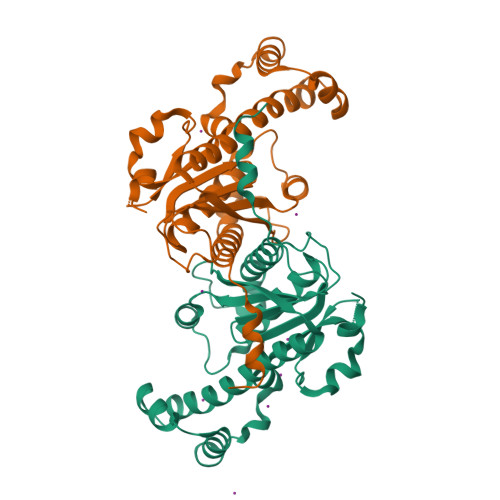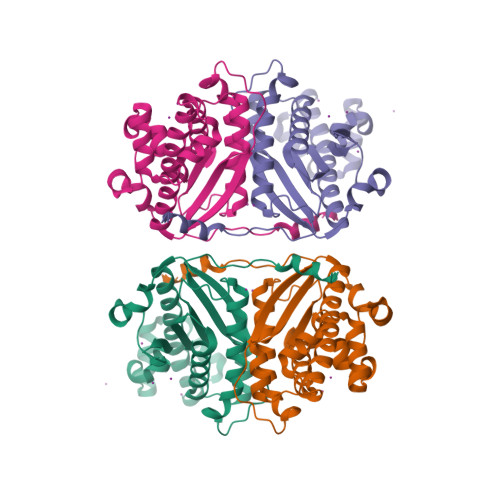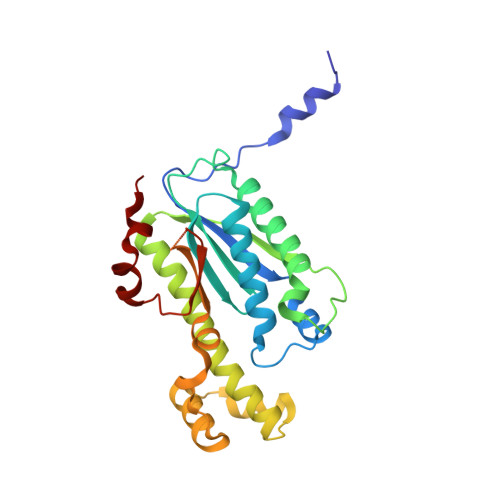tRNAHis guanylyltransferase (THG1), a unique 3'-5' nucleotidyl transferase, shares unexpected structural homology with canonical 5'-3' DNA polymerases.
Hyde, S.J., Eckenroth, B.E., Smith, B.A., Eberley, W.A., Heintz, N.H., Jackman, J.E., Doublie, S.(2010) Proc Natl Acad Sci U S A 107: 20305-20310
- PubMed: 21059936
- DOI: https://doi.org/10.1073/pnas.1010436107
- Primary Citation of Related Structures:
3OTB, 3OTC, 3OTD, 3OTE - PubMed Abstract:
All known DNA and RNA polymerases catalyze the formation of phosphodiester bonds in a 5' to 3' direction, suggesting this property is a fundamental feature of maintaining and dispersing genetic information. The tRNA(His) guanylyltransferase (Thg1) is a member of a unique enzyme family whose members catalyze an unprecedented reaction in biology: 3'-5' addition of nucleotides to nucleic acid substrates. The 2.3-Å crystal structure of human THG1 (hTHG1) reported here shows that, despite the lack of sequence similarity, hTHG1 shares unexpected structural homology with canonical 5'-3' DNA polymerases and adenylyl/guanylyl cyclases, two enzyme families known to use a two-metal-ion mechanism for catalysis. The ability of the same structural architecture to catalyze both 5'-3' and 3'-5' reactions raises important questions concerning selection of the 5'-3' mechanism during the evolution of nucleotide polymerases.
Organizational Affiliation:
Department of Microbiology and Molecular Genetics, University of Vermont, Burlington, Vermont 05405, USA.

















